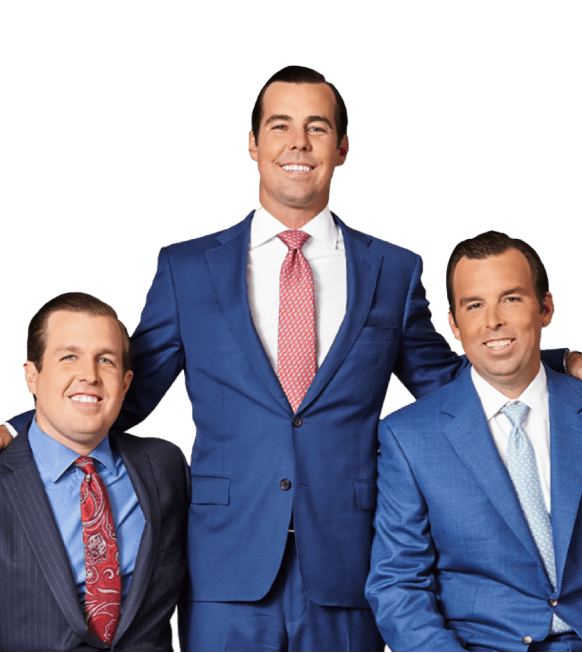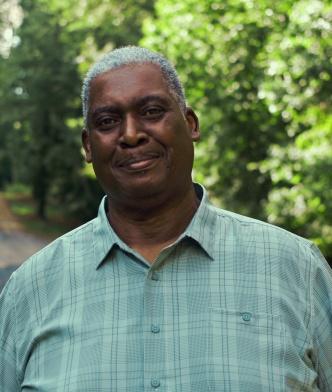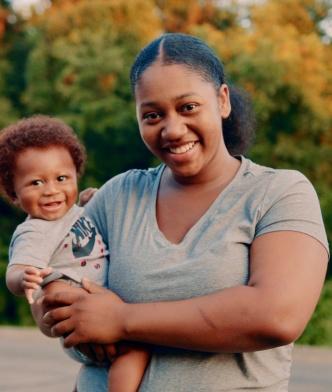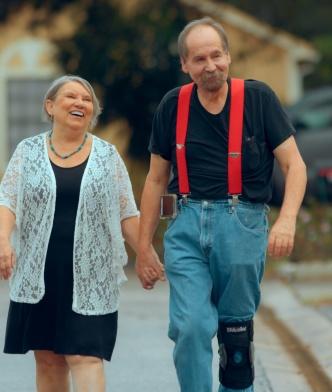How Do You Prove Negligence in a Slip and Fall?
How Do You Prove Negligence in a Slip and Fall?
- The Fee Is Free Unless You Win®.
- America's Largest Injury Law Firm™
- Protecting Families Since 1988
- 20 Billion+ Won
- 1,000+ Lawyers Nationwide
Free Case Evaluation
Porter Ranch Gas Leak
Jacob T. Rodgers v. City of Gainesville D/B/A Gainesville Regional Utilities
Estate of Frank Townsend v. RJ Reynolds, et al.
Morgan Stanley Data Security Litigation
Stephen Davis v. Levon Clark, Ricardo Williams, Marty Grifka and Derek Pak
McAdams v. Monier Lifetile, LLC
Coleman v. Martinez
Gold v. Lumber Liquidators
Clemmons, Patrick
Brink v. Ruiz

The attorneys featured above are licensed in Florida. For a full list of attorneys in your state please visit our attorney page.
How Do You Prove Negligence in a Slip and Fall?
If you experienced injuries and expenses due to a fall on someone else’s property, you might wonder, “How do you prove negligence in a slip and fall?” While proving negligence is critical to recovering your medical costs and other damages, gathering enough evidence to show that another is responsible for your fall can be tough.
Morgan & Morgan sees the consequences of severe fall injuries every day, with victims suffering detrimental emotional, physical, and financial impacts. However, you could be entitled to a settlement for your damages.
Our tenacious slip and fall lawyers know how to prove negligence and hold responsible property and business owners accountable. Contact us to get help with a free case evaluation.
What Is a Slip and Fall?
It is critical to understand that only some falls qualify for a legal claim and compensation. However, if you can prove that another was responsible for your injuries due to their negligent or reckless conduct, you could have a slip and fall claim and seek compensation.
All property owners, whether they own private, commercial, or public premises, must keep their property well-maintained and free of hazards for guests and visitors. Moreover, they should post appropriate warnings if the dangerous condition cannot be remedied immediately.
When a property owner knows or should know of a hazard and does nothing to fix or remove it, you could hold them accountable for your injuries and monetary losses.
Examples of Hazardous Conditions in a Slip and Fall Claim
The key to proving negligence in a slip and fall is identifying and documenting the hazardous condition that caused the fall. If you cannot prove that a danger existed, the defendant and their legal team could argue that your injuries occurred due to your own lack of attention or clumsiness.
While there could be many hazards causing slips and falls, some of the more common examples include:
- Wet floors
- Missing handrails
- Broken or missing steps
- Debris on floors
- Cables or boxes cluttering walkways
- Lack of lighting
- Sidewalks with cracks and potholes
- Loose or uneven floorboards
If you are unsure whether you fell due to a hazard and have a valid claim, consult with a slip and fall lawyer to understand your legal options and learn about your rights.
Proving Negligence in a Slip and Fall
Property owners must maintain their premises adequately and remove any hazards promptly. However, even if you slipped or tripped and fell due to a hazard, proving a property owner’s responsibility and recovering compensation can be challenging. Defendants typically argue that injured individuals are responsible for their falls. To prove your claim, you have to show that either:
- The property or business owner knew or should have known of the hazard
- The owner or an employee knew of the dangerous condition but failed to repair or warn of it
- The property owner or lessee caused the hazardous condition
Slip and fall claims can be tricky to litigate as the existence of a hazard alone does not necessarily entitle you to damages. Timing is often the critical issue in slip and fall claims. For example, if a dangerous condition occurred suddenly, causing your fall, a business or property owner could assert that they did not have time to remove the hazard. However, if you can prove that the dangerous condition existed for some time or was even reported before, and the property owner did nothing to protect visitors, you could have a good case.
Proving the Elements of a Personal Injury Claim
In addition to showing that an avoidable hazard caused your fall, you will also have to prove the four critical elements of a personal injury claim:
- The property owner owed you a duty of care
- They breached their duty by failing to fix or remove the hazard
- The breach caused your slip and fall
- You have injuries and financial damages as a direct result of the breach
A slip and fall lawyer from Morgan & Morgan can investigate your accidental fall and help gather the evidence needed to prove negligence and pursue damages from the responsible property owner.
Evidence Required to Prove Your Slip and Fall Claim
Claimants generally need to supply two types of evidence to pursue damages:
1. Evidence proving their injuries and damages
AND
2. Evidence showing the responsible party’s liability.
Proving Your Injuries and Losses
Evidence required to prove your fall injuries, medical costs, and other financial losses can include:
Medical Records
Seeking medical help as soon as possible after your slip and fall can help you recover quicker. Importantly, seeing a doctor can provide evidence proving your injuries, such as medical reports documenting your injuries and treatments. Ensure to retain any statements and receipts of medical bills you have paid already. Collect receipts for out-of-pocket costs such as medications, bandages, medical devices, and others.
Receipts and Statements
If you were seriously hurt in a slip or fall, you probably have numerous expenses in addition to medical bills, such as loss of income, transportation costs, and others. Gather evidence, including pay stubs, bank statements, and receipts for out-of-pocket expenses. To receive reimbursement for your expenses and losses, you will have to show proof.
Proving Liability of the At-Fault Party
To qualify for damages, you must also present evidence that a property owner or another responsible party caused your slip and fall. Material that can help to prove liability includes:
Accident Report
Record your accident properly if you fall in a store, office building, restaurant, or public area. Ask the premises owner or manager to fill in an accident report. Documenting your accident this way can be crucial evidence for a compensation claim or lawsuit later. Do not sign any documents or accident reports you do not fully understand or agree with, and insist on keeping a copy for your records.
Witness Statements
If anyone saw your fall, such as other visitors to the property or employees, ask them for their contact details. Witness statements can be crucial evidence for recovering compensation.
Other Essential Evidence
Additional evidence that could help you prove your claim includes:
- Pictures and videos of the accident scene and the cause of your fall
- Security camera footage of the area
- Photographs of your injuries
- Written accounts of the accident and your recovery
- Property records showing maintenance and repair
How an Attorney Can Help Gather Evidence
Unfortunately, gathering the necessary evidence on your own can be tricky, as a business or property owner probably refuses to provide you with security camera footage or business records that could prove their negligence.
However, a slip and fall lawyer can request such evidence officially through the legal process. They can ask the defendant in a lawsuit to produce relevant documents and other evidence. Moreover, your attorney can also send a spoliation letter to the defendant, designed to prevent them from destroying any evidence that could be relevant to the case. If the defendant deletes or destroys evidence despite being told to preserve it, they could face legal consequences.
Get answers to commonly asked questions about our legal services and learn how we may assist you with your case.
Morgan & Morgan
How Much Time Do I Have to File a Slip and Fall Claim?
How much time injured individuals have to take legal action will depend on where they live, as the deadlines can vary considerably from one state to another. Claimants in some states have only one year to file a slip and fall lawsuit, while others could have four years or more to file a claim. Moreover, there could be other factors that could shorten or lengthen your time for filing a lawsuit, such as:
Suing a Government Entity
The legal process of suing the government can come with additional obligations and steps. In some states, injured individuals must file a “notice to sue” with the applicable government body before they can go ahead and file a lawsuit. Timeframes to file such notices can be as short as a month or two, depending on where you live.
Being Incapacitated
In certain circumstances, a slip and fall victim may be so badly injured that they could not file a lawsuit within the deadline set by the state. Such claimants may receive an extension to file their lawsuit later.
The Discovery RuleIn many states, time only starts running when the claimant knows or should have known about their injury. If your injury was undetected for months after your fall, the time will start to run down on the date you were diagnosed rather than from the day of your fall.
Seek Legal Advice to Protect Your Rights
It is important to note that missing the deadline for filing a lawsuit could prevent you from receiving compensation. Since every slip and fall case is different, personalized legal advice can be essential for a successful outcome of your claim.
Where Do Most Slips and Falls Happen?
Slips and falls can occur on public, commercial, and private premises. However, some locations, such as restaurants and grocery stores, are more prone to spillages, slippery floors, and other hazardous conditions. Properties that experience slips and falls can include:
- Retail stores
- Hotels
- Convenience stores
- Hospitals and emergency rooms
- Construction sites
- Office buildings
- Nursing homes
- Theme parks
- Parking lots
- Public transit stations
- Airports
Which Slip and Fall Injuries Qualify for Compensation?
Falls can cause debilitating injuries. Figures from the Centers for Disease Control and Prevention (CDC) show that fall injuries particularly affect older adults.
Generally, you could be entitled to compensation for all injuries suffered in a slip and fall, including any emotional distress you experienced. Common compensable slip and fall injuries include:
- Head injuries such as traumatic brain injury (TBI)
- Sprains and strains
- Bone fractures
- Back injuries such as herniated discs
- Spinal cord damage
- Neck and shoulder injuries
Morgan & Morgan’s slip and fall lawyers could help you seek compensation for any injuries and expenses resulting from a slip and fall injury.
Which Damages Could I Receive for My Slip and Fall?
What you can recover in a slip and fall claim can depend on several factors, such as the extent of your injuries, whether you suffered a permanent disability, and your medical costs. Slip and fall victims may be entitled to the following damages and others:
- Wage loss and loss of future expected income
- Medical expenses and estimated future healthcare costs
- Medical devices
- Disability
- Pain and suffering
- Emotional distress
- Reduced life quality
Since compensation varies from one claim to another, speaking to a slip and fall attorney at Morgan & Morgan can help you discover what your case is worth.
What Should I Do if I Slip and Fall in a Store or Restaurant?
If you or a loved one suffers an injury in a slip and fall accident, take the following critical steps:
- Get medical assistance immediately
- File an accident report with the premises
- Try to identify and document the cause of your fall
- Take photos and videos of the area where you fell
- Contact an attorney to protect your rights
Morgan & Morgan Can Help
If a property or business owner’s carelessness caused your fall and injuries, you should not have to pay for their mistake. Morgan & Morgan wants you to receive fair compensation for your injuries and losses, so you can rebuild your life and avoid financial chaos.
If you want to find out “how do you prove negligence in a slip and fall?”—get in touch with us. Our determined slip and fall lawyers could help you get the settlement you need and deserve. Our fee is free unless we win and recover compensation, so there are no out-of-pocket expenses for you.
Don’t struggle with a complex slip and fall claim alone when you could have America’s largest personal injury firm in your corner, fighting aggressively for your best interests. Contact us today to find out for free whether we can help you.
How it works
It's easy to get started.
The Fee Is Free Unless You Win®.
Results may vary depending on your particular facts and legal circumstances.
Step 1
Submit
your claimWith a free case evaluation, submitting your case is easy with Morgan & Morgan.
Step 2
We take
actionOur dedicated team gets to work investigating your claim.
Step 3
We fight
for youIf we take on the case, our team fights to get you the results you deserve.






